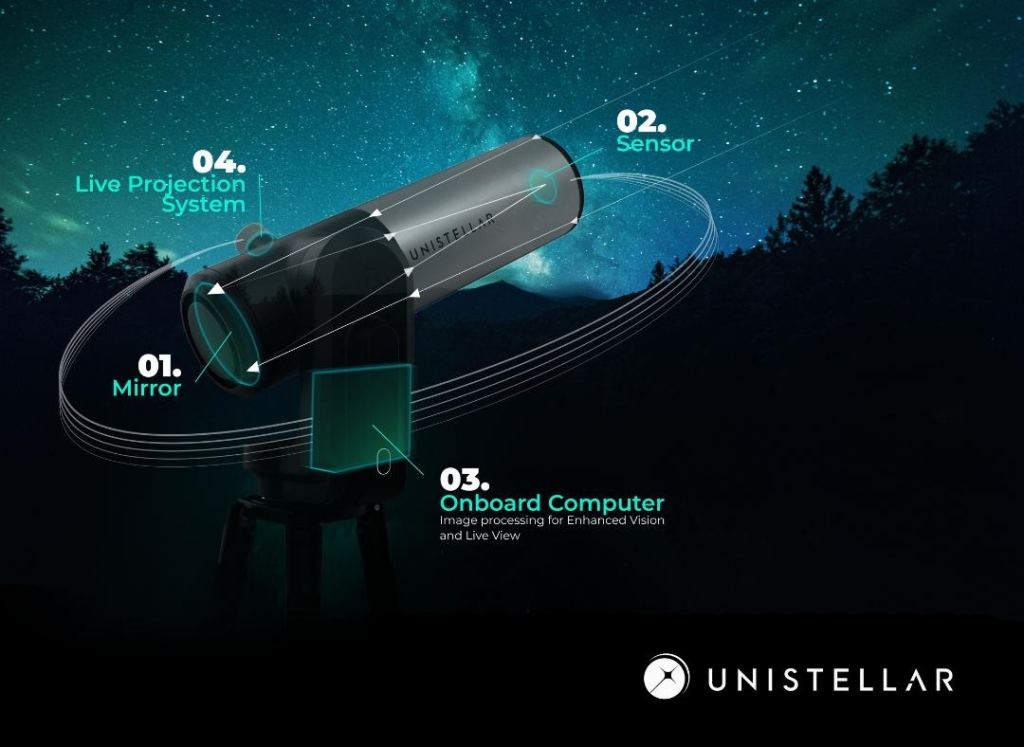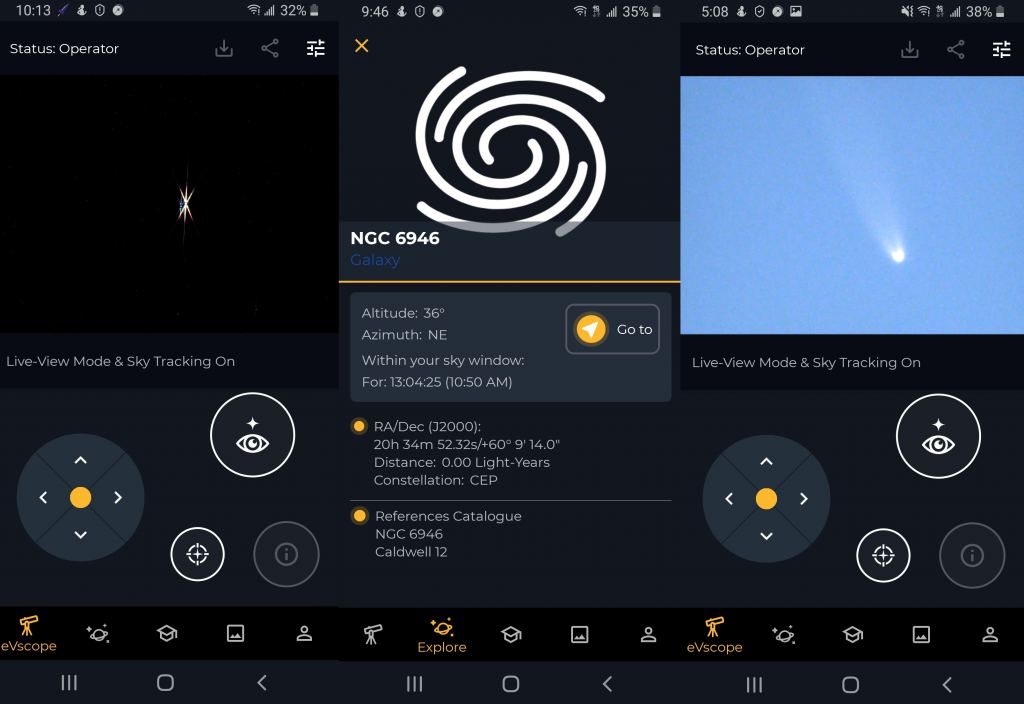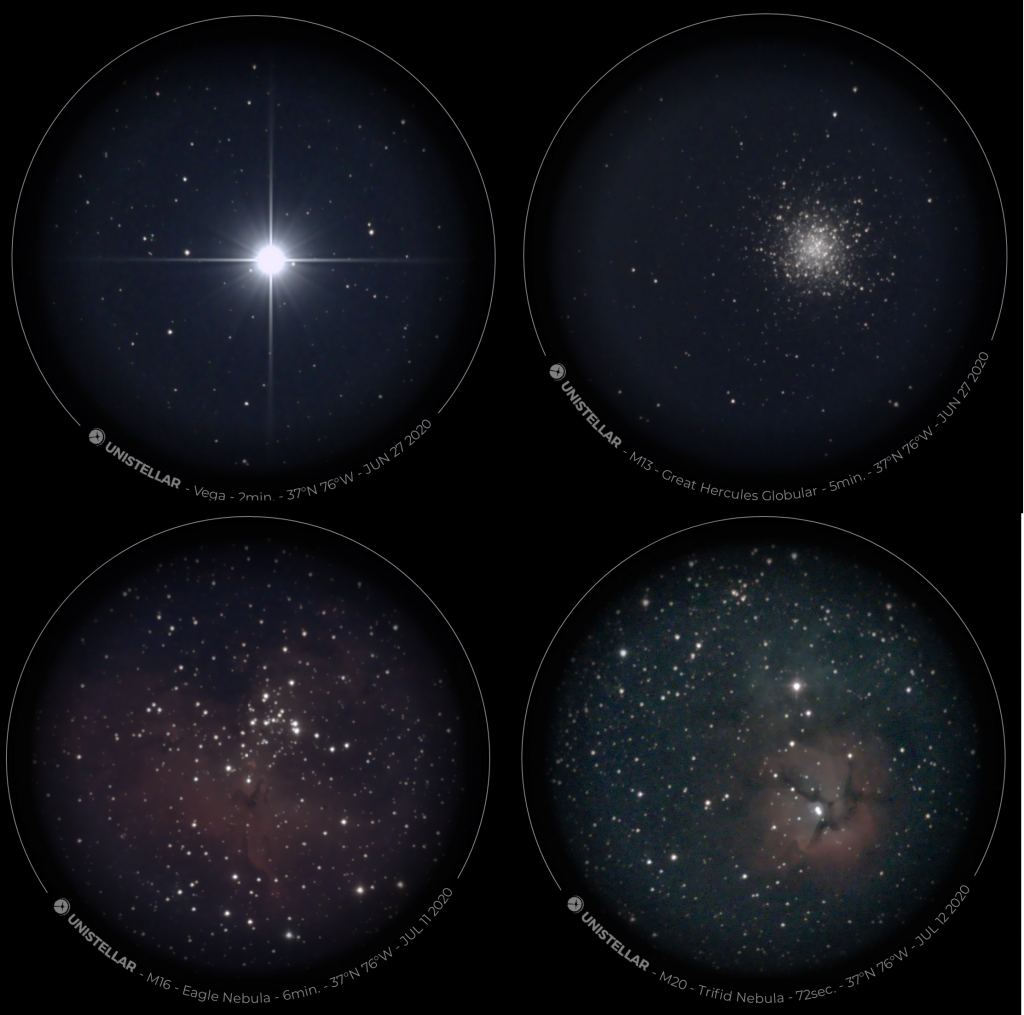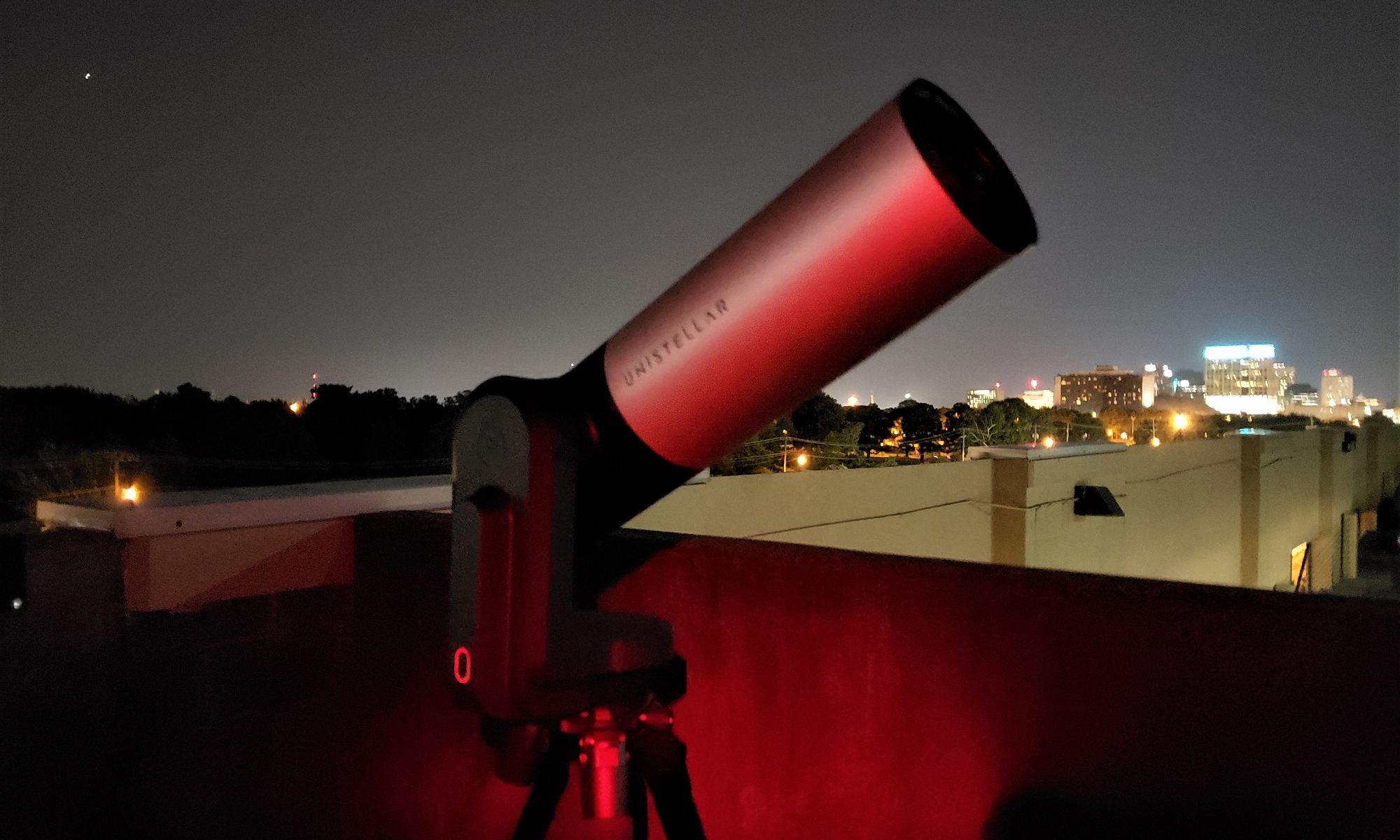There’s no finder, and often no eyepiece… and ‘goto’ is as simple as the push of a virtual button. Welcome to the new generation of smartscopes. This new crop of telescopes promises to put the Universe and the night sky at your fingertips, or at least, on your smartphone screen.
We recently put a Unistellar eVscope though its paces, and we were thoroughly impressed. The telescope system incorporates an 112mm/4.4” mirror with an f/4 focal ratio, and a Sony Exmor IMX224 1.27 megapixel CMOS sensor at the secondary mirror position, much like a ‘Fastar’ style imaging system. This all makes for a very seamless looking instrument with just one button: the power on/off input, which glows a sensible night-vision-preserving red when powered up.

The KickStarter for the eVscope ran through 2018, and was a huge success. The current scope is available for ($2,999 USD).
eVscope: First Night Out
Ironically, focusing the telescope is extremely simple and low tech: The telescope has a large hand-sized knob at the back fo the tube assembly that pushes and pulls the mirror into focus, Cassegrain-style. Unistellar also provides a focusing mask for the aperture of the telescope, and fine focusing at the beginning of a session is as simple as aiming at a bright star and tweaking the cross-haired image in to alignment.

All interface control with the telescope is through the Unistellar App, which is free to download from the Google Play or Apple Store. Starting the telescope is as simple as setting up and leveling the tripod (it has a built-in bubble level just for that purpose), locking the upper tube and mount assembly into the top tripod ring, and powering on and connecting your phone’s wifi to the telescope. Then, simply use the virtual joystick to steer the telescope to a random section of sky (note: it has to be dark enough to see stars), hit the field detection button, and the GPS does the rest.
The eVscope and the new crop of gotos use GPS in concert with a method known as plate-solving to figure out where they are on planet Earth, and what direction in the sky they are currently pointed toward. Fun to think: ‘plate-solving software’ was actually pioneered by the military, and was once classified tech used to point nuclear missiles.
The swift setup is a great plus for the eVscope: I could literally have it up and running in three minutes. The telescope is also extremely portable: heck, it even has its own backpack (sold separately). Such human-portable utility is reminiscent of Edmund red trackball Astroscan telescope: you could easily hike to a dark sky site with the telescope for setup and a night’s worth of observing with this unit. Packed up, the eVscope plus tripod in the backpack weighs in at 25 lbs, not bad.
Unfortunately, at 29” in length, the backpack is just 7 inches too long to meet most international airline check-in requirements, meaning you would have to risk putting the eVscope in checked baggage for international travel.
We even managed to put the eVscope through its paces at a public star party under a reasonably dark sky site, with the Back Bay Astronomy Club. Feedback was overwhelmingly positive, though we had to field several versions of the question “where is the imager?” through the night. There does seem to be a curious level of disconnection with looking at a screen, versus the built up anticipation of looking through an eyepiece. One neighboring telescope user recounted a similar tale while showing off Saturn to the public on the screen of his laptop, stating he had to periodically jiggle to tube of the telescope to demonstrate that the image was indeed real, and not simply something off of the web. This reminds me of the story of a 19th century minister, who refused to believe that the view of Saturn wasn’t simply something that was painted on the lens of the telescope! The Unistellar eVscope actually has a great hybrid solution for this, with an electronic image projection camera located in an eyepiece-like turret near the base of the telescope tube, sort of like a standard eyepiece on a Nasmyth focus. Perhaps, this is just a testament to just how big a leap something like the eVscope truly is.

The telescope performed well through an entire night, with 61% of the battery remaining after the evening was over. We even went after some targets that we ordinarily would have passed up at a star party, including comet U6 Lemmon and the recent supernova in the galaxy Messier 85.
Comet updates were out immediately, enabling us to not only capture Comet C/2019 U6 Lemmon, but bright comet C/2020 F3 NEOWISE low in the dawn. Two of the most amazing aspects of this telescope are its ease of portability and quick setup, along with giving the user the capability to grab deep-sky targets from an urban setting… and no more neck-craning, kneecap-grinding sessions trying to aim the telescope!
We found the entry mode for right ascension and declination was a bit counterintuitive… still, once we realized the entry was reversed for each section rather than the traditional screen input, it was a snap. It took me a while (and practice) to get the right ‘touch’ to hand slew slowly vs fast with the virtual joystick. Also, live-streaming was not possible from an Android smartphone, as the wifi connection to the telescope also shuts down mobile data. Unistellar assures us that this is not an issue with an Iphone, as they managed to recently pull the eVscope in to the virtual star party. Of course, these are all software and not hardware issues, something that may well be fixed with a future update.
Another intriguing aspect of the Unistellar eVscope project is its capability to do real science. Already, users have nabbed exoplanet transits (!) and stellar occultations. I can also see potential for variable star observations and comet and asteroid hunting.
Unistellar’s eVscope is an amazing product, and perhaps, a portent of things to come in amateur astronomy.
-Also, check out our recent review of the Vaonis Stellina telescope.

